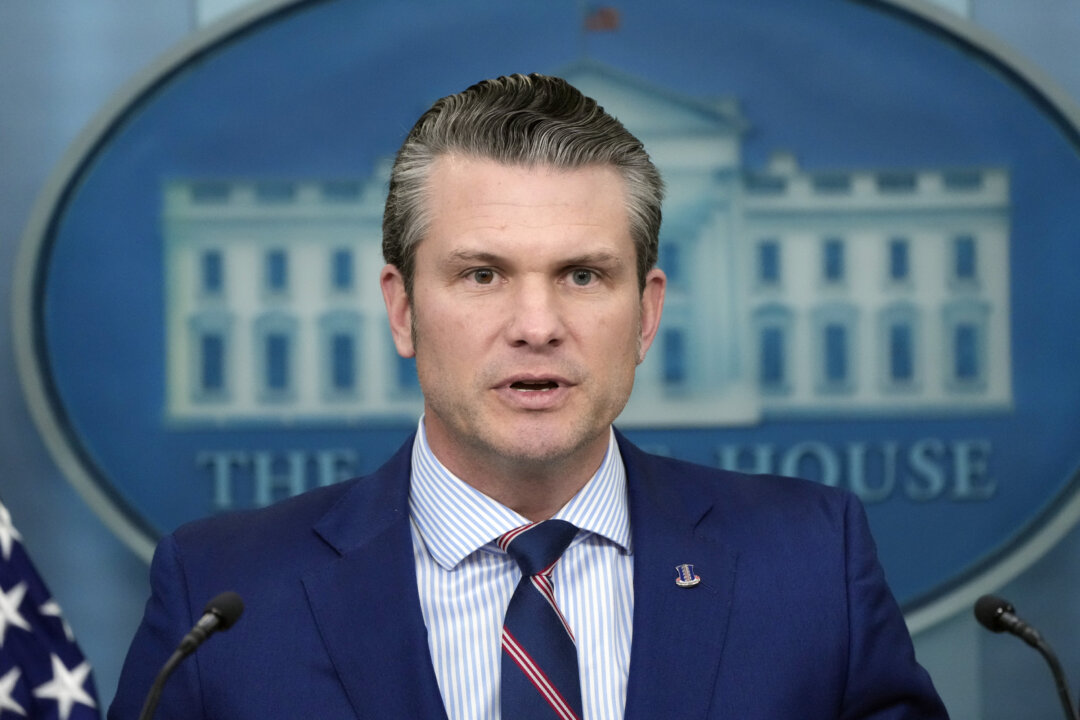Defense Secretary Pete Hegseth spoke to his Southern Korean and Japanese counterparts for the first time on the phone.
U.S. Defense Secretary Pete Hegseth held introductory calls with his counterparts in Japan and South Korea on Jan. 30, reaffirming U.S. security partnerships with both countries.
Hegseth was sworn in on Jan. 25 after narrowly winning Senate confirmation. In a statement to the military after taking office, he said the United States “will work with allies and partners to deter aggression in the Indo–Pacific by Communist China.”
In separate phone calls, Hegseth spoke to Japanese Defense Minister Gen Nakatani and Acting South Korean Minister of National Defense Kim Seon-ho.
According to a Pentagon readout, Hegseth and Nakatani “reiterated the importance of deepening defense cooperation to strengthen deterrence and to advance a shared vision for a free and open Indo–Pacific region.”
Japan’s defense ministry said the two defense leaders reaffirmed that the U.S.–Japan defense treaty covers a group of Japan-controlled uninhabited islands in the East China Sea. The islands—known as the Senkakus Islands in Japan and the Diaoyu Islands in China—have been a source of tension between Beijing and Tokyo, as the Chinese regime claims the islands are part of its territory.
Hegseth and Nakatani also agreed to strengthen the U.S.–Japan alliance, including upgrading their command-and-control framework and expanding their bilateral presence in Japan’s southwestern region amid what the ministry called the “increasingly severe security environment in the Indo–Pacific.”
In July last year, Washington and Tokyo announced the creation of a new Japan-based joint force headquarters under the authority of the U.S. Indo–Pacific Command.
A Chinese aircraft carrier entered Japan’s contiguous waters for the first time in September last year, a move that drew criticism from Tokyo.
According to a separate Pentagon readout about the call between Hegseth and Kim, the U.S. defense chief reiterated U.S. commitment to defend South Korea under President Donald Trump’s leadership.
South Korea’s Ministry of National Defense stated in a press release that Hegseth and Kim agreed “that the level and scope of cooperation between the Korea–U.S. alliance should be further deepened and developed.”
They expressed concerns regarding the escalating military collaboration between Russia and North Korea, agreeing to address this issue by working closely with the international community, the release said.
North Korea has deployed more than 11,000 troops and large quantities of missiles and ammunition to Russia since October last year in support of Moscow’s war in Ukraine, according to the U.S. Treasury Department.
Last month, South Korea’s Joint Chiefs of Staff warned that North Korea might dispatch additional troops to Russia.
Hegseth and Kim also agreed to maintain and develop the trilateral cooperation between South Korea, Japan, and the United States.
The current trilateral cooperation can be traced back to the first Trump administration’s national security strategy, released in December 2017, which said that the United States would “encourage the development of a strong defense network with our allies and partners,” such as cooperating on missile defense with Japan and South Korea.
In August 2023, President Joe Biden convened a historic summit at Camp David with Japanese Prime Minister Fumio Kishida and South Korean President Yoon Suk Yeol. The leaders inked a new security accord known as the “Camp David Principles,” which has paved the way for the three nations to cooperate in multiple areas, including intelligence sharing and holding military exercises.
A year after the pact was signed, the three leaders issued a joint statement saying that the three sides had made “tremendous progress” in the past year.
On Jan. 15, Japan, South Korea, and the United States held their first joint air drills of the year, according to the U.S. Indo–Pacific Command. In a press release, the command said the exercises involved two Japanese Air Self-Defense Force F-2 fighters and two South Korean F-15K fighters escorting two U.S. Air Force B-1B long-range bombers.
“This increasingly steady and sophisticated trilateral interoperability of our aerial and maritime forces strengthens our collective deterrence and defense posture,” the U.S. Indo–Pacific Command said.

